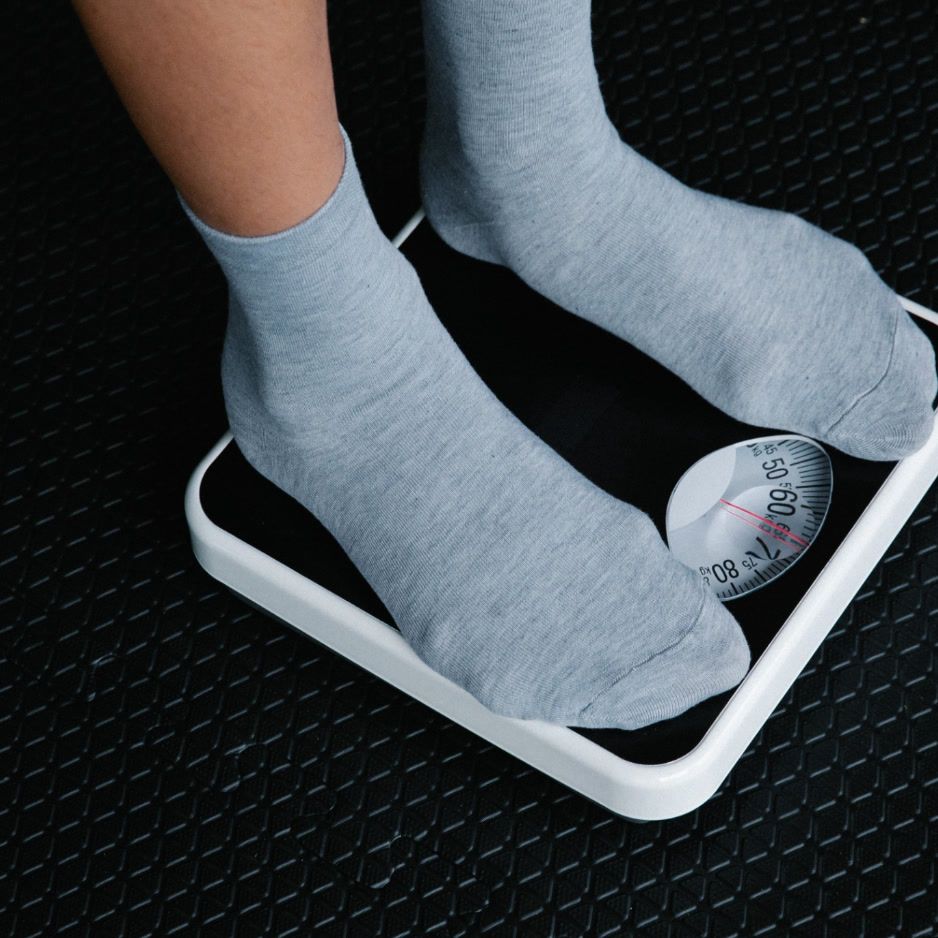Pantry Staples: Checklist, Meal Planner & Smart Shopping Guide
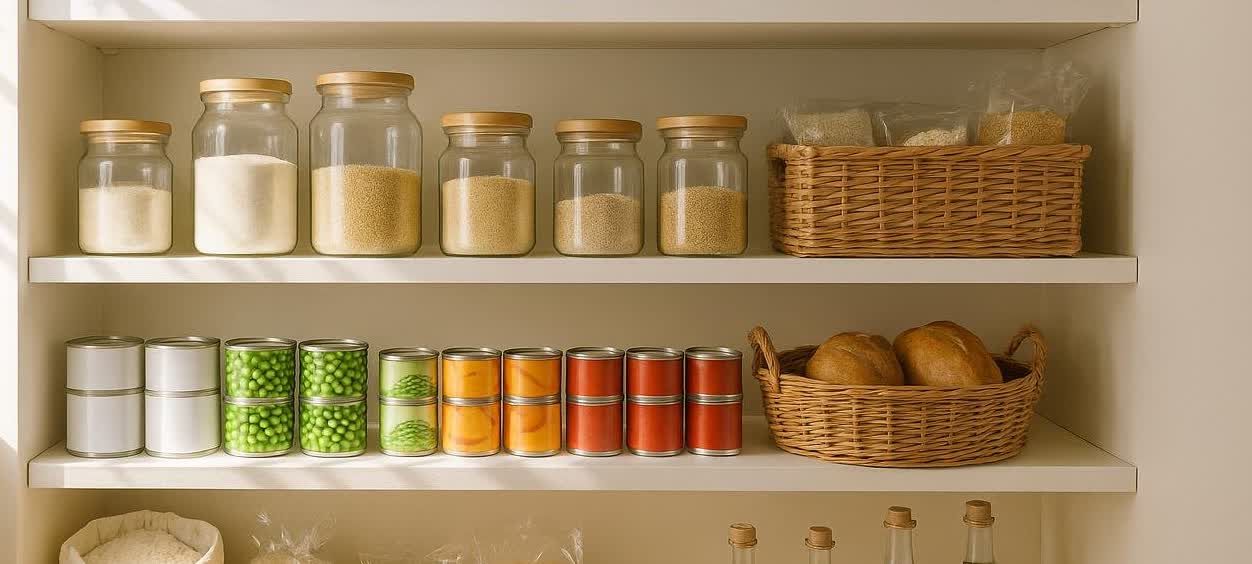
Pantry Staples: A Checklist & 7-Day Meal Planner
A well-stocked pantry turns weeknights into 15-minute meals. This guide gives you a clear staples list, smart storage rules, and plug-and-play meal ideas. Use the guide to personalize everything to your budget and dietary needs.
- Instantly create a shopping list tailored to vegan, gluten-free, or high-protein preferences.
- See how your cart changes depending on your needs—compare Basic, Pro, and Family tiers in seconds.
- Turn what’s already in your pantry into a 7-day, ready-to-cook meal plan.
Quick answer: what are essential pantry staples? Grains (rice, oats, pasta), beans and lentils, canned tomatoes and fish, versatile oils and vinegars, core spices (salt, pepper, garlic/onion powder), plus freezer and fridge basics (eggs, frozen veg, yogurt, broth). Stock these and you can mix-and-match fast, healthy meals all week.
How to Use This Guide
- Scan the Essentials List to fill gaps fast.
- Pick a tier (Basic, Pro, Family) that matches your budget and cooking time.
- Save the 15-Minute Meal Formulas for “what’s for dinner?” nights.
- Keep the Shelf-Life & Safety reference handy to minimize waste and maximize freshness (with USDA-backed guidance linked in each claim).
To align your pantry with specific nutritional goals, pair smart stocking with data-driven targets using our quick macro guide and validate your progress with a BodySpec DEXA scan.
The Essential Pantry Staples List (By Category)
Use these as building blocks. Starter picks are bolded.
Sauces, Condiments, & Flavor Boosters
- Extra-virgin olive oil
- Avocado oil (high-heat)
- Red wine vinegar
- Apple cider vinegar
- Rice vinegar
- Soy sauce
- Tamari
- Fish sauce
- Hot sauce
- Dijon mustard
- Whole-grain mustard
- Peanut sauce
- Gochujang
- BBQ sauce
- Mayonnaise
- Ketchup
- Mustard
- Tomato paste (tube for easy storage)
- Marinara sauce
- Salsa
- Pesto
- Honey
- Maple syrup
Canned & Jarred Produce
- Canned tomatoes
- Canned corn
- Canned green beans
- Canned mushrooms
- Jarred olives
- Capers
- Artichoke hearts
- Roasted red peppers
Grains & Starches
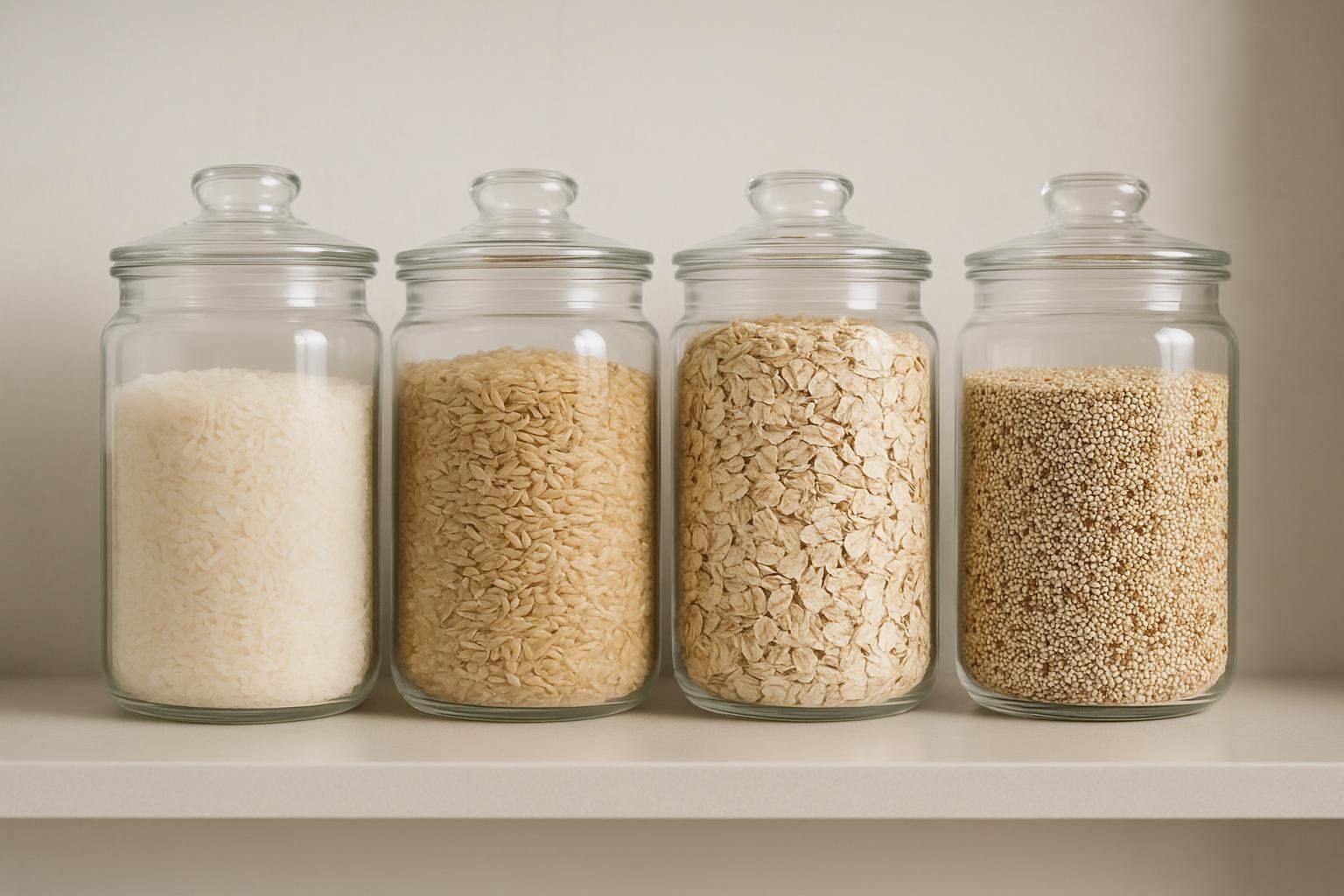
- Rice (white, brown, jasmine, or basmati)
- Oats (old-fashioned, quick, or steel-cut)
- Quinoa
- Farro
- Bulgur
- Barley
- Whole-wheat pasta
- Chickpea pasta
- Instant polenta
- Potatoes (Storage tip: keep in a cool, dark spot to maintain quality longer.)
- Sweet potatoes
Beans, Lentils, and Plant Proteins
- Canned beans (black, pinto, chickpeas)
- Canned lentils
- Dry beans
- Dry lentils
- Peanut butter
- Almond butter
- Tahini
- Tempeh (refrigerated)
- Shelf-stable tofu packs
For a deeper comparison of shelf-stable proteins, see our High-Protein Non-Perishables Guide.
Canned & Jarred Proteins
Pro-tip: Choose proteins packed in water to better control fat and sodium.
- Tuna
- Salmon
- Mackerel
- Sardines
- Canned chicken
- Shelf-stable bone broth or stock
Baking & Breakfast
- All-purpose flour
- White whole-wheat flour
- Baking powder
- Baking soda
- Yeast
- Sugar
- Brown sugar
- Alternative sweeteners
- Cocoa powder
- Vanilla extract
- Shelf-stable milk
- Shelf-stable plant milk
- Chia seeds
- Flax seeds
Herbs & Spices
- Kosher salt
- Black pepper
- Garlic powder
- Onion powder
- Smoked paprika
- Chili powder
- Cumin
- Oregano
- Cinnamon
- Red pepper flakes
- Curry powder
- Garam masala
- Italian herb blend
Fridge “Basics” That Stretch Meals

- Eggs
- Plain Greek yogurt
- Firm tofu
- Parmesan
- Feta
- Shredded cheddar
- Mozzarella
- Lemons/limes
- Carrots
- Celery
- Onions
- Cabbage
- Kale (longer-lasting greens)
Freezer Power-Ups

- Mixed vegetables
- Broccoli florets
- Peas
- Frozen berries
- Frozen mango
- Chicken thighs
- Ground turkey
- Salmon fillets
- Shrimp
- Cooked rice or grains (freeze flat in bags for 5-minute reheats)
For meal-prep ways to use these, bookmark our 30+ Healthy Meal Prep Ideas.
Tiered Carts: Basic vs. Pro vs. Family
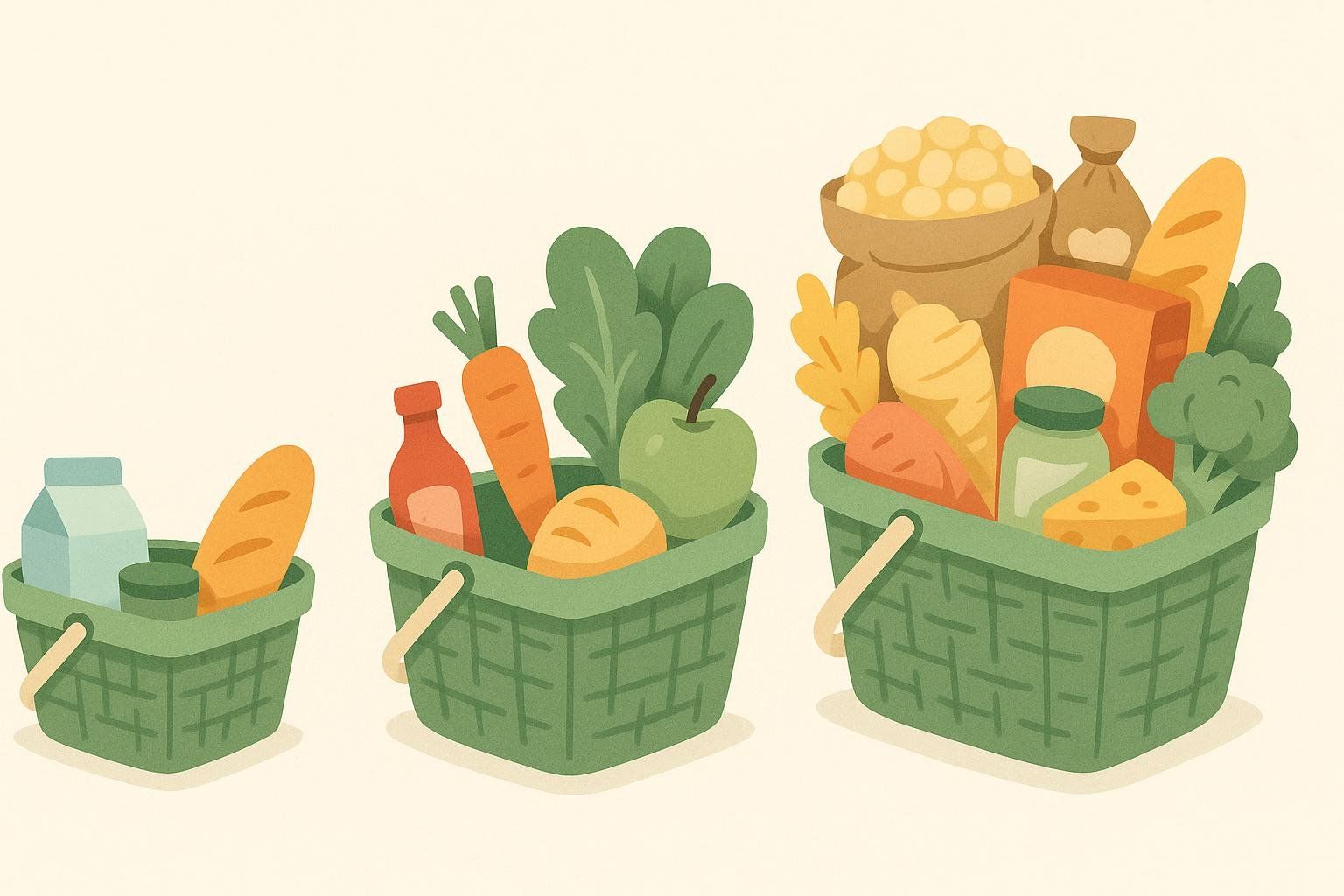
Start with a tier below and adjust as needed. The Pro and Family tiers build upon the Basic list.
Basic (Budget-Friendly, Minimal Cooking)
- Rice, oats, whole-wheat pasta
- Canned beans (no-salt added)
- Canned tuna or canned chicken
- Marinara, salsa, olive oil, vinegar
- Frozen mixed veg
- Shrimp
- Chicken thighs
- Salt, pepper, garlic powder, chili powder
Pro (Versatility + Flavor)
- Quinoa or farro
- Chickpea pasta
- Tomato paste (tube)
- Sardines or salmon
- Shelf-stable bone broth
- Cumin, smoked paprika, curry powder
- Fish sauce, gochujang, pesto
Family (Batch Cooking + Kid-Friendly)
- Bulk rice and oats
- Whole-wheat and regular pasta
- Canned tomatoes, beans, and corn
- Low-sodium broth
- Peanut butter, ketchup, BBQ sauce
- Frozen fruit and veg
- Ground turkey, chicken breast
- Cheese block, tortillas, eggs
15-Minute Meal Formulas (No Recipe Required)
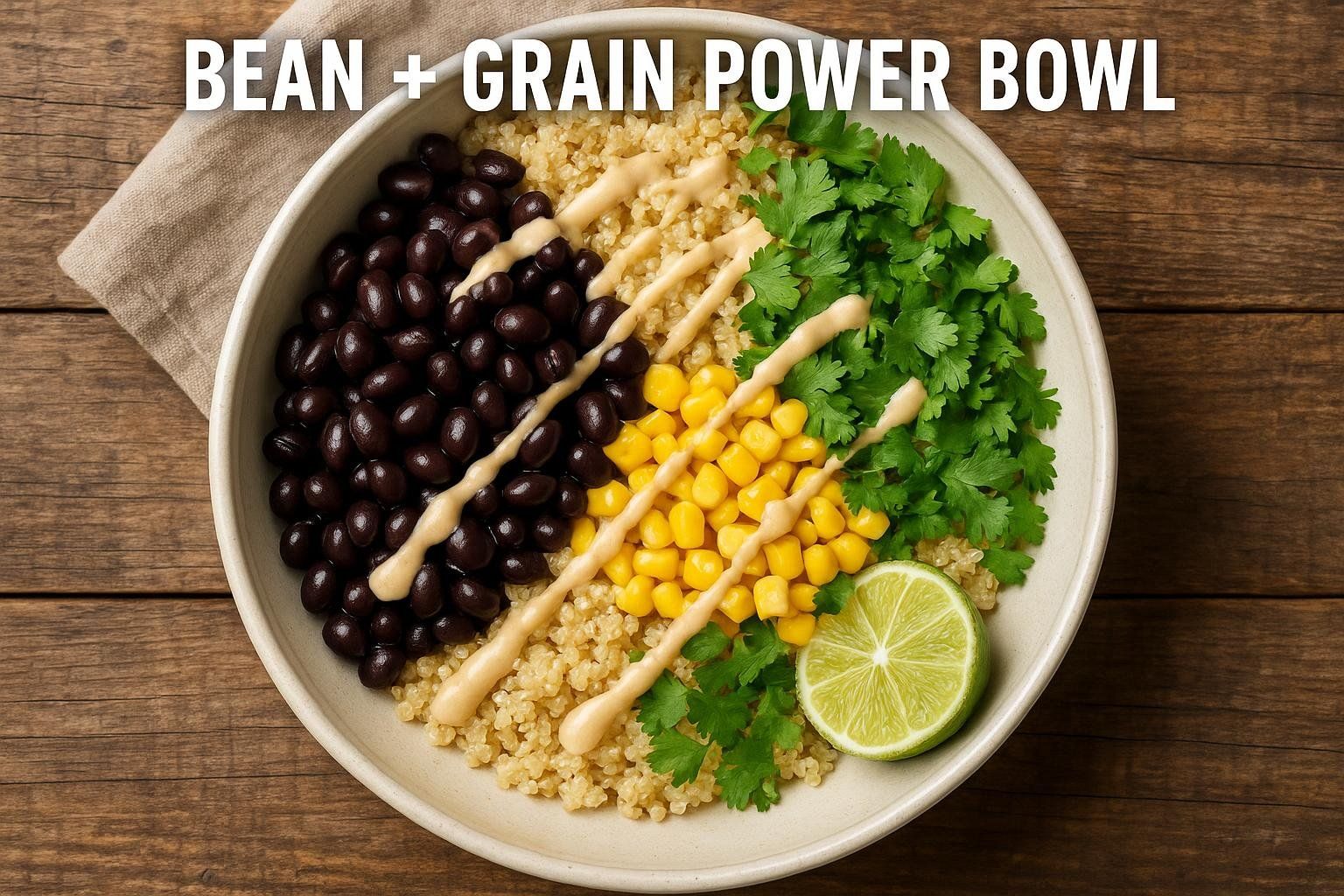
Memorize these blueprints, then swap components based on what’s in your pantry.
- Bean + Grain Power Bowls
- Base: rice or quinoa
- Protein: black beans or chickpeas
- Veg: frozen peppers/onions or mixed veg
- Sauce: salsa + Greek yogurt or tahini-lemon
- Optional: avocado, cilantro, hot sauce
- Tuna (or Chickpea) Pasta Toss
- Base: whole-wheat or chickpea pasta
- Protein: canned tuna or chickpeas
- Flavor: olive oil + lemon + red pepper flakes
- Add-ins: canned tomatoes, parmesan (or kale for extra greens)
- 10-Minute Fried Rice
- Base: leftover or frozen rice
- Protein: eggs, tofu, shrimp, or chicken
- Veg: frozen peas + carrots
- Sauce: soy/tamari + sesame oil + garlic powder
- Sheet-Pan “Dump” Dinner
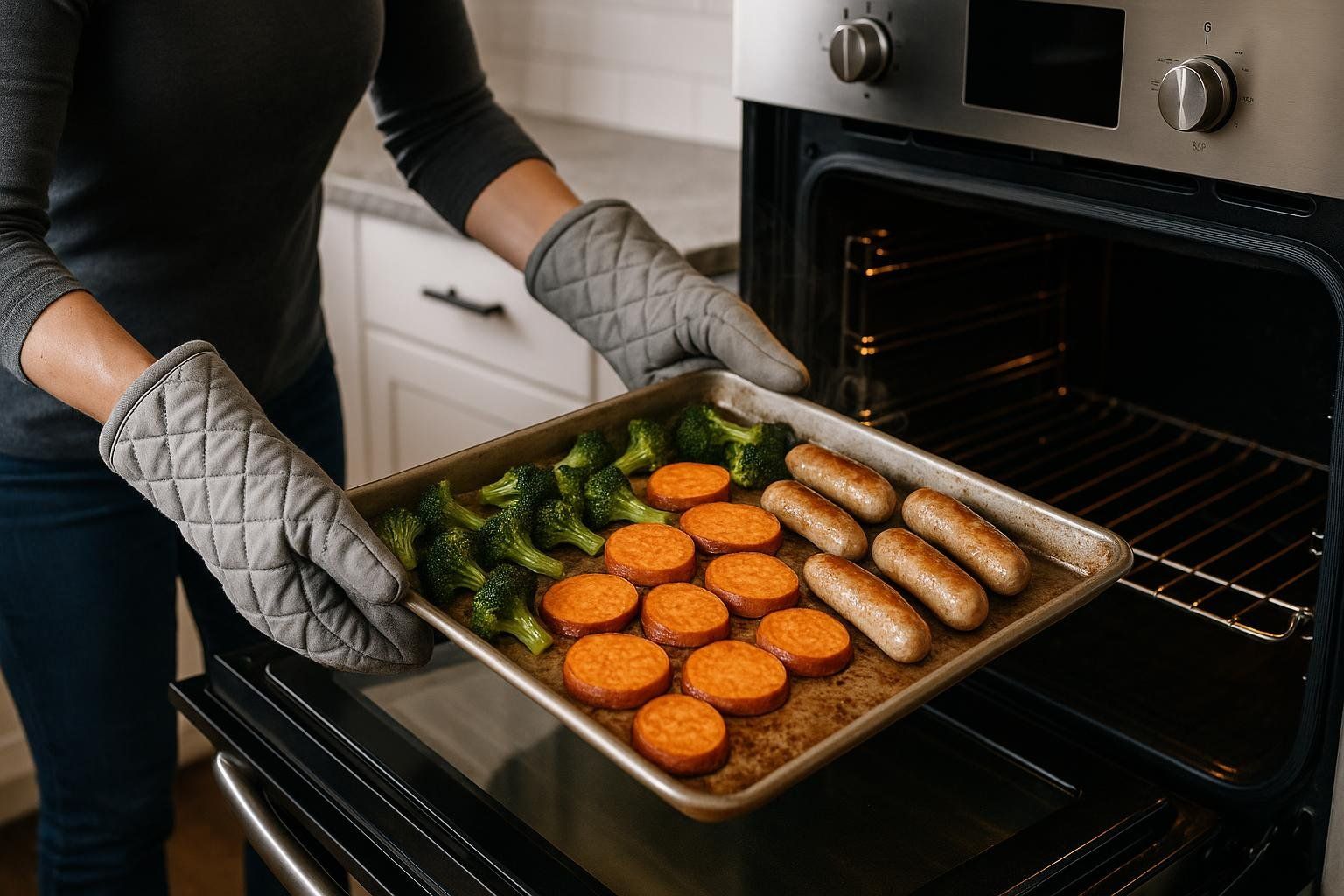
- Protein: pre-cooked chicken sausage or quick-cooking tofu
- Veg: thin-sliced potatoes/sweet potatoes + onions + broccoli
- Season: olive oil, smoked paprika, salt, pepper
- Roast at 425 °F until heated through and tender (check after 12–15 minutes).
- Lentil Soup Shortcut
- Sauté onion/carrots/celery; add canned lentils + canned tomatoes + broth
- Season with cumin, chili powder, and lemon
- Serve with toast or tortillas
Looking for high-protein swaps? Use our High-Protein, Low-Carb Food List to customize these.
Shelf-Life, Storage, and Safety (Quick Reference)
- Definition: Shelf-stable foods are safe at room temp (canned/bottled items, rice, pasta, oils) as defined by the USDA.
- Storage temp: Keep canned goods cool, clean, dry; avoid heat, damp spots, and garages. Aim for below 85 °F / 29.4 °C, which the USDA notes helps preserve quality.
- Quality windows: High-acid cans last about 12–18 months; low-acid cans last 2–5 years when intact and stored properly, per USDA guidance.
- Botulism: when to toss: Discard cans that are leaking, bulging, badly dented, rusty, spurting on opening, or smell off—these are signs the USDA associates with botulism risk.
- Dented cans: Small dents are usually safe; discard deeply dented cans, especially on seams. The USDA explains why seam damage is risky.
- After opening: Refrigerate; high-acid foods keep ~5–7 days; low-acid foods ~3–4 days. For best flavor, transfer leftovers to glass or plastic containers, per USDA guidance.
- Dry goods: Safe indefinitely but lose freshness; protect from moisture and pests; consider airtight containers, says the USDA.
- Date labels: “Best if Used By” signals quality, not safety, for most shelf-stable goods, per the USDA pantry and fridge checklist.
Pro Tip: Use a simple FIFO (first-in, first-out) system—write purchase dates on tops of cans so older items get used first.

7-Day Pantry-Forward Meal Planner
Use the Pantry Builder to auto-fill based on what you already have, or start with this template. Swap proteins and grains freely.
| Day | Dinner (≈30 minutes or less) | Notes |
|---|---|---|
| Mon | Tuna-white bean salad with lemon, parsley, and crusty bread | Serve with crackers for extra crunch |
| Tue | One-pot turkey (or lentil) chili | Make double; freeze half |
| Wed | Teriyaki salmon, frozen broccoli, and microwave rice | Use bottled teriyaki sauce, or make a quick version with soy sauce and honey |
| Thu | Chickpea curry with coconut milk over quinoa | Add frozen spinach |
| Fri | Sheet-pan chicken thighs with potatoes and carrots | Season with smoked paprika |
| Sat | Pasta puttanesca (tomatoes, olives, capers) + sardines | 15-minute pantry classic |
| Sun | Tofu fried rice with peas and eggs | Use leftover rice |
Budget & Organization Playbook
- Compare unit prices (cost per ounce) and buy shelf-stable items in bulk when you have storage space.
- Choose versatile “starters” that cross cuisines: rice, beans, tomatoes, onions, garlic, olive oil, chili powder, cumin, soy/tamari, and vinegar.
- Keep a “use-me-next” bin for cans nearing their quality window.
- Batch-cook base layers (grains, beans) on Sundays; freeze extras in flat bags for rapid reheats.
- Label everything with contents and date—small habits prevent big waste.
For more organization ideas, see our Meal Prepping guide and explore whole-food swaps in our Unprocessed Foods Guide.
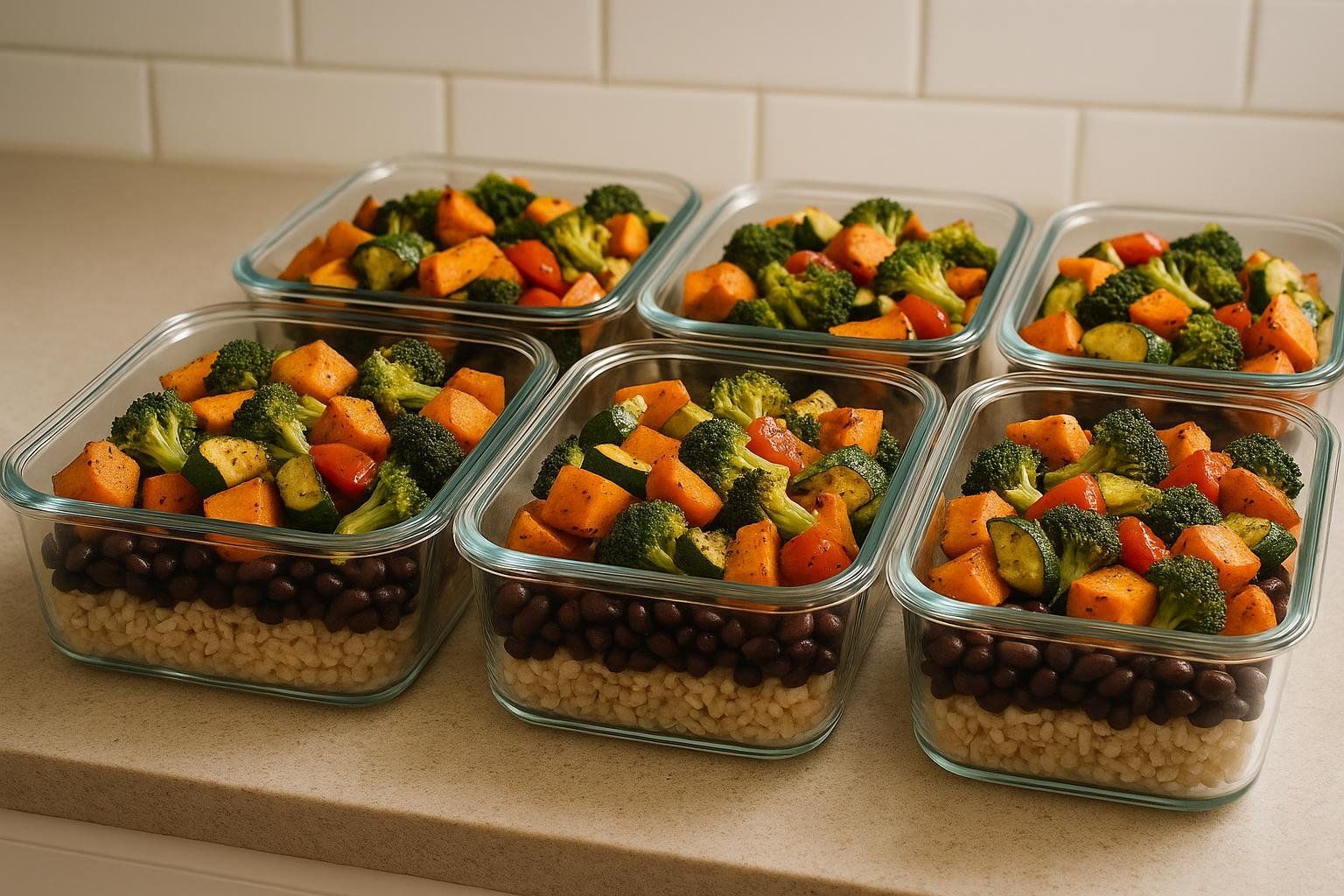
Make Your Pantry Work for Your Goals
Eating higher-protein, fiber-rich meals from pantry staples makes it easier to maintain or lose fat while preserving muscle. Validate your progress with data: schedule a quick BodySpec DEXA scan and, if you’re dialing calories, use our RMR guide to estimate your daily energy needs.
